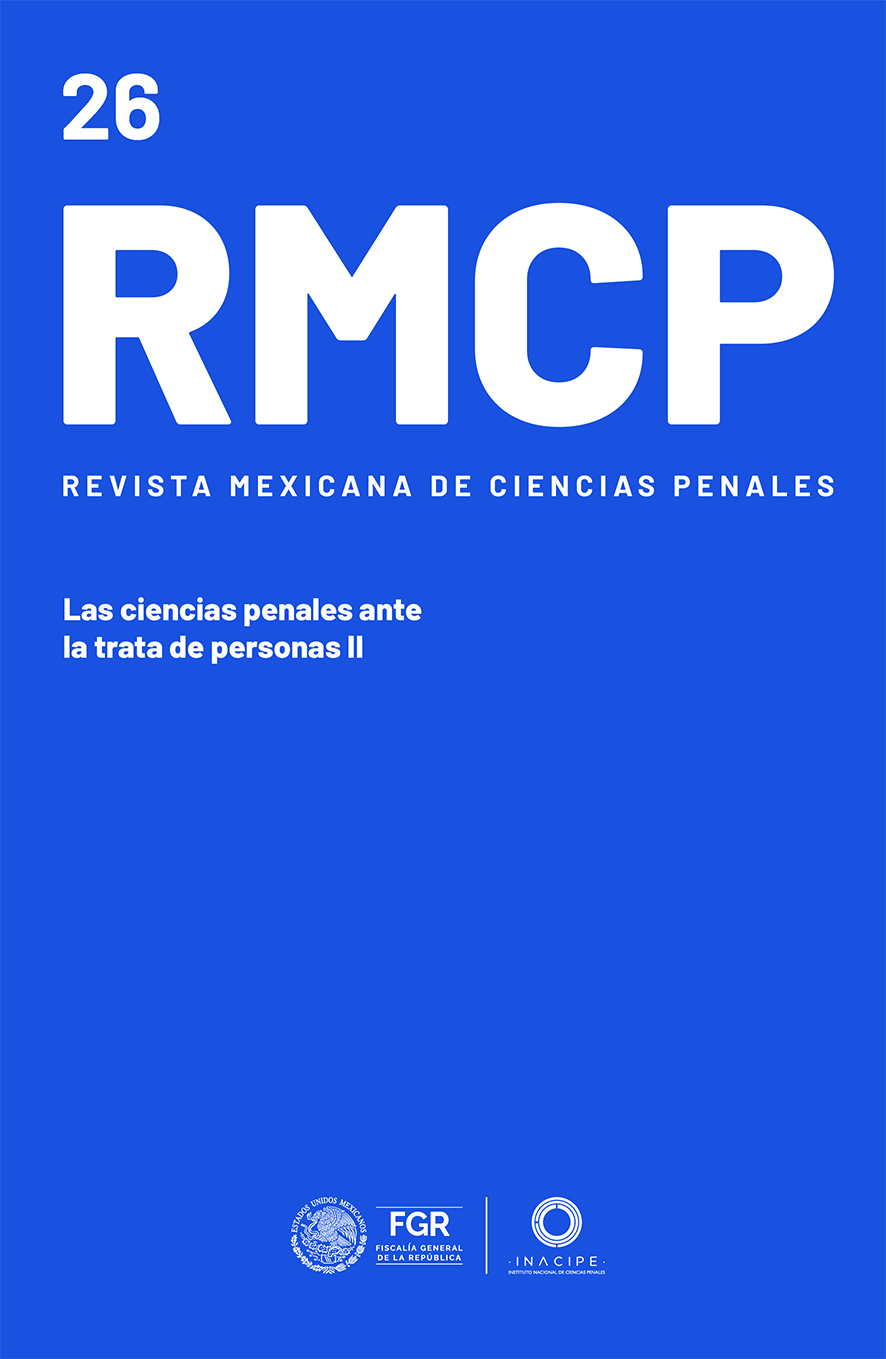Artificial Intelligence for the Detection and Prevention of Human Trafficking
Main Article Content
Abstract
Artificial intelligence has revolutionized the fight against human trafficking by providing advanced tools for its prevention and investigation. Technologies such as natural language processing, big data analysis, geolocation, facial recognition, and blockchain have proven being effective in identifying criminal networks and detecting victims. Through the automated analysis of large volumes of data, artificial intelligence enables the anticipation of criminal patterns, the tracking of suspicious financial transactions, and the strengthening of the protection of victims’ identities. However, its implementation also presents challenges regarding privacy, algorithmic bias, and legal regulation, requiring a robust regulatory framework to ensure its ethical and transparent use. This study analyzes the impact of artificial intelligence on the prevention of human trafficking and proposes solutions to maximize its benefits without compromising human rights.
Downloads
Article Details

This work is licensed under a Creative Commons Attribution 4.0 International License.
Deprecated: json_decode(): Passing null to parameter #1 ($json) of type string is deprecated in /var/www/html/plugins/generic/citations/CitationsPlugin.inc.php on line 49
Métricas
References
Amnistía Internacional (2021). Surveillance and human rights: The risks of facial recognition technology. https://www.amnesty.org/en/latest/research/2021/06/surveillance-and-human-rights/
Bejarano Rodríguez, María, Teresa de Gasperis, Estefanía Eléxpuru Boullosa, Ana Romo Escribano (2023). El impacto de las nuevas tecnologías en la trata de seres humanos. Accem. https://www.accem.es/wp-content/uploads/2023/12/accem-impacto-tecnologias-trata-seres-humanos.pdf
Buolamwini, Joy y Tinmit Gebru (2018). Gender Shades: Intersectional Accuracy Disparities in Commercial Gender Classification. Conference on Fairness, Accountability, and Transparency. Massachusetts: Gender Shades. https://proceedings.mlr.press/v81/buolamwini18a.html
Deparment of Homeland Security (2025). "About Blue Campaign". Blue Campaign. https://www.dhs.gov/blue-campaign/about-blue-campaign
Europol (2022). Seizing the Opportunity: 5 Recommendations for Crypto Assets-Related Crime and Money Laundering. 2022 Recommendations of the Joint Working Group on Criminal Finances and Cryptocurrencies. Europol y Basel Institute on Governance. https://baselgovernance.org/sites/default/files/2022-12/2022_Recommendations_Joint_Working_Group_on_Criminal_Finances_and_Cryptocurrencies.pdf
FMI: Fondo Monetario Internacional (2023). “Cryptocurrencies and Illicit Financial Transactions: Risks and Countermeasures”.https://www.imf.org
Hacibedel, Burcu y Héctor Pérez-Saiz (2023, 29 de septiembre)."Assessing Macrofinancial Risks from Crypto Assets". International Monetary Fund Working Papers. Fondo Monetario Internacional.
IBM: International Business Machines (2025). X-Force 2025 Threat Intelligence Index. https://www.ibm.com/thoughtleadership/institute-business-value/report/2025-threat-intelligence-index
IBM (s.f.-a). “¿Qué son las redes neuronales?”. https://www.ibm.com/mx-es/topics/neural-networks
IBM (s.f.-b). “¿Qué es un árbol de decisión?”. https://www.ibm.com/mx-es/topics/decision-trees
IBM (s.f.-c). “¿Qué es el clustering?”. https://www.ibm.com/eses/topics/clustering
Interpol (s.f.). “Reconocimiento facial”. https://www.interpol.int/es/Como-trabajamos/Policia-cientifica/Reconocimientofacial#:~:text=Desde%20su%20creaci%C3%B-3n%2C%20el%20Sistema,personas%20de%20inter%-C3%A9s%20y%20desaparecidos
Interpol y Unated Nations Interregional Crime and Justice Research Institute (UNICRI) (2019). Artificial Intelligence and Robotics for Law Enforcement. Torino: UNICRI.
IOM: International Organization for Migration (2021). “IOM Institutional Strategy on Legal Identity”. https://publications.iom.int/books/iom-institutional-strategy-legal-identity
Latonero, Mark (2011). Human Trafficking Online, The role of social Networking Sites and Online Classifieds. Center on Communication Leadership & Policy. Los Ángeles: University
of Southern Carolina.
Lavista Ferres, Juan M. y William B. Weeks, ai for Good: Applications in Sustainability, Humanitarian Action, and Health. Nashville: John Wiley & Sons.
Lyon, David (2018). The Culture of Surveillance: Watching as a Way of Life. Cambridge: Polity Press.
UNODC: Oficina de las Naciones Unidas contra la Droga y el Delito (2024). Global Report on Trafficking in Persons 2024. https://www.unodc.org/documents/data-and-analysis/glotip/2024/GLOTIP2024_BOOK.pdf
Parlamento Europeo y Consejo de la Unión Europea (2024). Reglamentom(UE) 2024/1689 del Parlamento Europeo y del Consejo, de 15 de julio de 2024, relativo a la inteligencia artificial y por el que se establecen disposiciones para su desarrollo, comercialización y uso. En Diario Oficial de la Unión Europea, L 257, de 20 de julio de 2024, 1-60. http://data.europa.eu/eli/reg/2024/1689/oj
Stop the Traffik (s.f.). “Stop the Traffik: Preventing Human Trafficking”. https://stopthetraffik.org/
Stop the Traffik (2025). Partnering to Fight Hidden Crime. https://stopthetraffik.org/wp-content/uploads/2025/04/MARCH-2025-EA-Brochure.pdf
World Economic Forum (2024). Digital Assets Regulation: Insights from Jurisdictional Approaches. Insight Report. https://www3.weforum.org/docs/WEF_Digital_Assets_Regulation_2024.pdf

